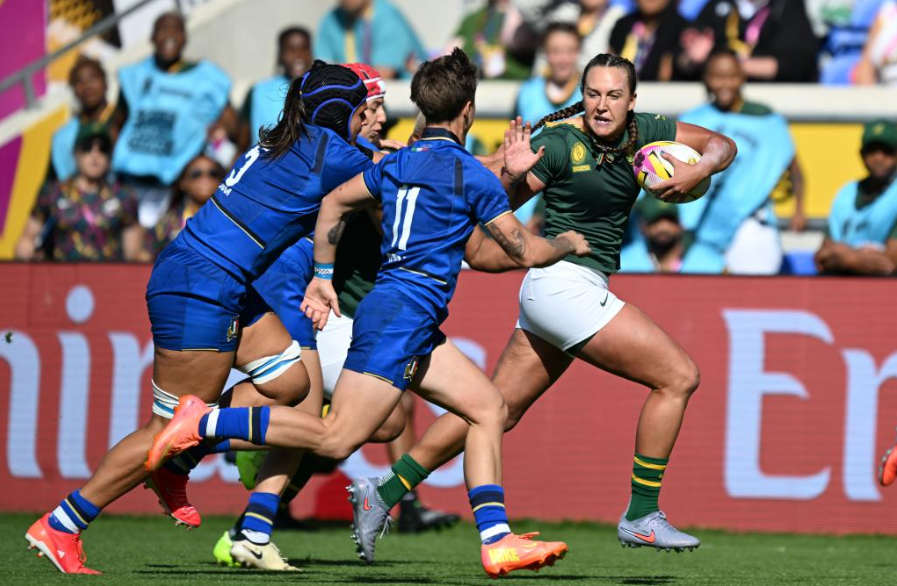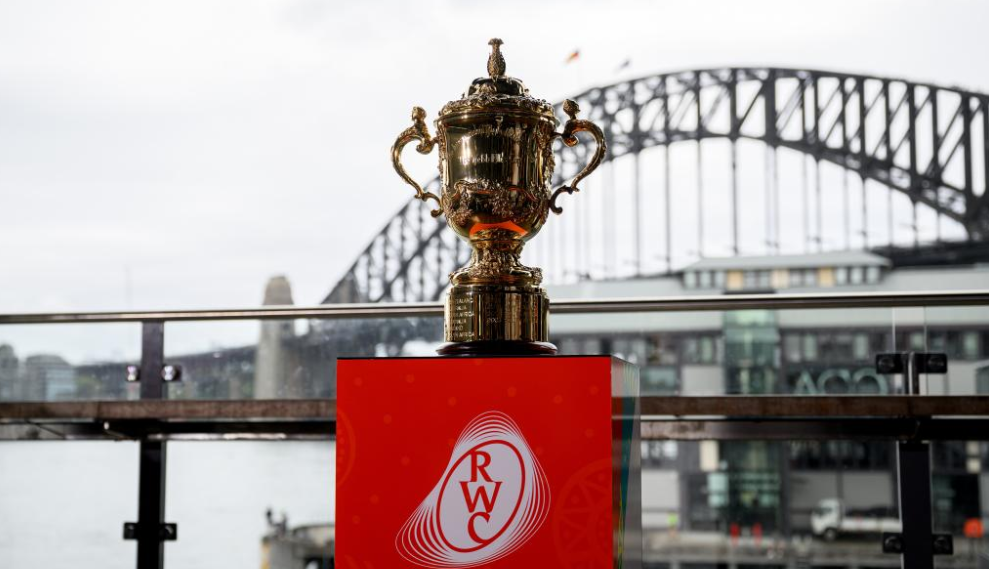History doesn’t always announce itself with fireworks. Sometimes it sneaks up in the form of a single try, a desperate late surge, and a final whistle that leaves you blinking in disbelief. On 31 August 2025, in a pool-stage match at the Women’s Rugby World Cup, South Africa edged Italy 29-24 in York. On paper, it’s just another tight contest. In reality, it might be the most significant result in the history of South African women’s rugby.
For the first time ever, the Springbok Women beat Italy. For the first time ever, they qualified for a Rugby World Cup quarter-final. And for the first time, they planted a flag that says: we belong in the upper echelons of the sport.
Why This Matters More Than the Scoreline
Italy are no pushover. They’ve been a Six Nations side with pedigree, one of those mid-tier nations that can topple giants on their day. South Africa, meanwhile, have spent years being treated as “grateful participants” at World Cups. Respectable, hardworking, but not in the same league as the Black Ferns, England, or France. Until now.
This win rips up that narrative. It says the Springbok Women aren’t here to make up the numbers. They’re here to hunt history.
The try that sealed it — Sinazo Mcatshulwa’s late score – will be replayed for years, but perhaps more significant was the composure around it. Italy had fought back from 17–5 down to tie things at 24-24. Old habits might have whispered “here we go again.” Instead, the Boks went hunting, with fly-half Libbie Janse van Rensburg pulling the strings and ending up named Player of the Match.
This wasn’t luck. This was growth.
The Ceiling is Higher Than Anyone Thought
Here’s the thing about ceilings: you don’t know how high they are until you smash through the first few layers. For decades, the Springbok Women’s ceiling was assumed to be low. A lack of funding, sparse grassroots structures, and cultural inertia around women playing rugby meant progress was always measured in inches, not miles.
But what happens when those assumptions no longer hold? What happens when a team that supposedly couldn’t climb suddenly stands on the brink of a semi-final?
That’s what this Italy result hints at: a ceiling that isn’t just high – it might match the skyscraper heights of the men’s game. And if that sounds bold, remember this: twenty years ago, the Springbok men were being written off after a disastrous early-2000s slump. By 2007, they were world champions. By 2019 and 2023, they were double-dynasty kings, after preceding seasons that could be best described as horrific and legacy-threatening. South African rugby has a habit of turning “hopeless” into “historic.”
Now imagine that same DNA injected into the women’s programme.

Knock-On Effects for South Africa
For the players themselves, this win buys credibility. Sponsors who hesitated might now pick up the phone. Schools and clubs that didn’t see the point of developing girls’ rugby will suddenly smell opportunity. A quarter-final berth means TV cameras, prime-time slots, and kids watching who didn’t know women’s rugby existed a month ago.
More than that, it creates heroes. Libbie Janse van Rensburg, Mcatshulwa, Zintle Mpupha, Nadine Roos etc. – these names carry weight now. They’re not just jersey-fillers; they’re trailblazers.
And let’s be blunt: South Africa is a country obsessed with rugby. When the men win, the whole nation marches. The women haven’t had that same luxury. But results like this kick the door open. If they go further in this World Cup, we could see the beginning of something seismic: a genuine women’s rugby movement in a country where the sport has always been a cultural heartbeat.
A Boost for the Global Women’s Game
This isn’t just about South Africa. Women’s rugby worldwide benefits when new nations break through. England and New Zealand can’t carry the entire load forever. Fans want unpredictability, rivalries, shocks. Italy beating South Africa would’ve been routine. South Africa beating Italy? That’s a storyline.
Think about what this does for World Rugby’s long-term vision. Suddenly, you’ve got a southern hemisphere counterweight to the Black Ferns. You’ve got a team whose men’s side is a global superpower – and whose women might one day match them. That’s box office. That’s how you sell women’s rugby to broadcasters in Africa, Asia, and beyond.
It’s no coincidence that the men’s game took off globally when more nations became competitive. Argentina beating the All Blacks. Japan stunning South Africa in 2015. Fiji winning Sevens gold. Women’s rugby is at the same crossroads now. South Africa’s rise could be the spark that tips the balance from “developing product” to “serious global sport.”
The Promise Ahead
Will the Springbok Women win this World Cup? Almost certainly not. The Black Ferns, Red Roses, and Les Bleues still look a cut above. But that’s not the point. The point is trajectory.
Italy 24-29 South Africa isn’t about a quarter-final slot. It’s about planting a seed. A belief that the Springbok Women can go toe-to-toe with the best. A vision that, given proper support, they could climb the same Everest the men conquered.
And here’s the kicker: once that belief catches fire, it becomes contagious. More girls pick up rugby balls. More coaches invest. More administrators realise the potential. The ceiling lifts, again and again, until one day, maybe, South Africa isn’t just a feel-good story. They’re world champions.
And wouldn’t that be something?




